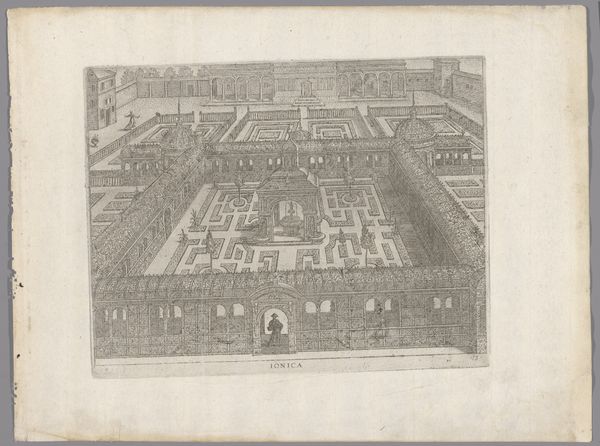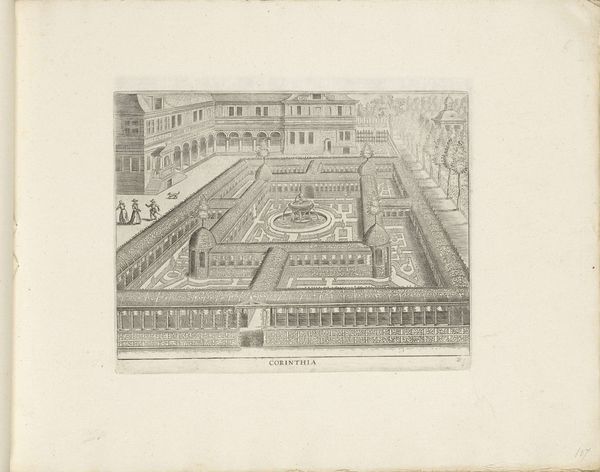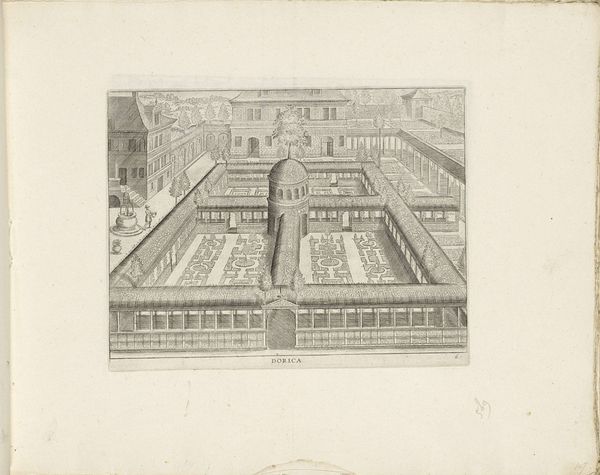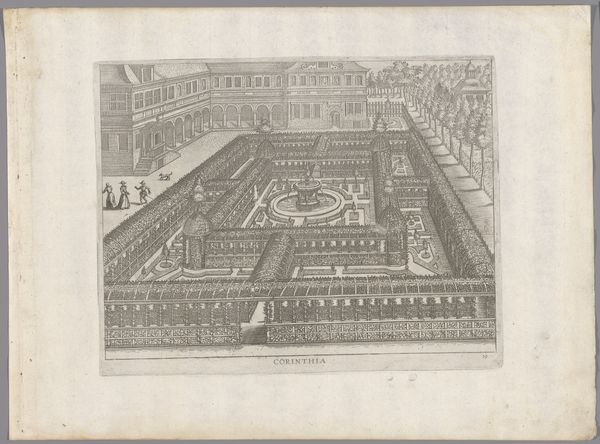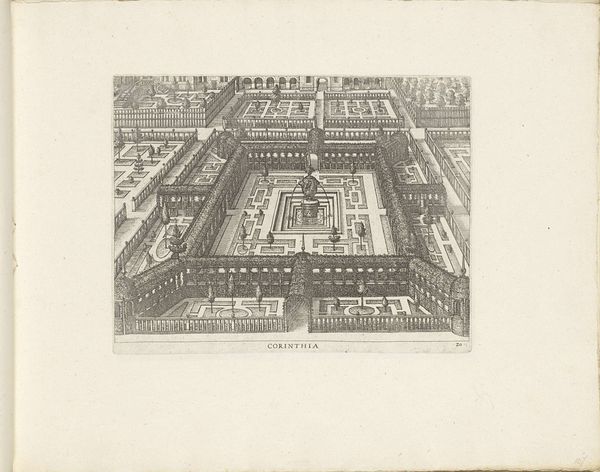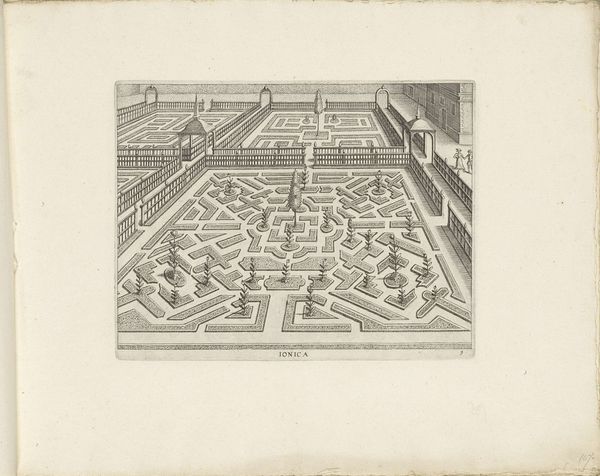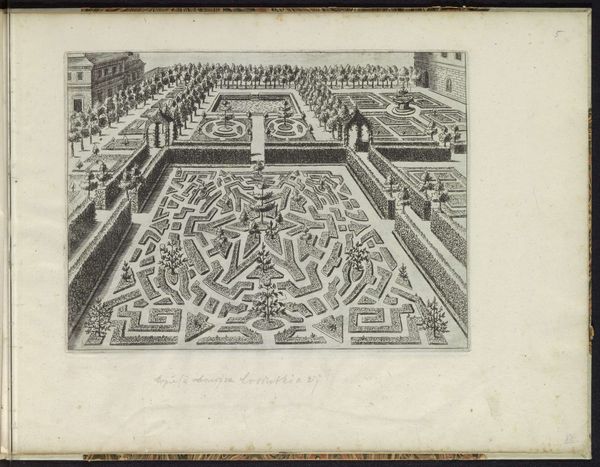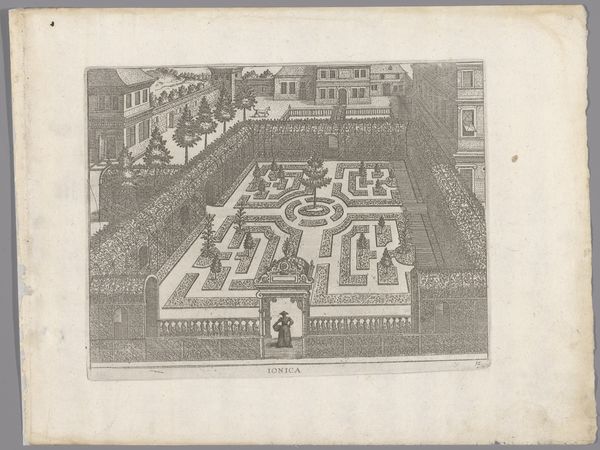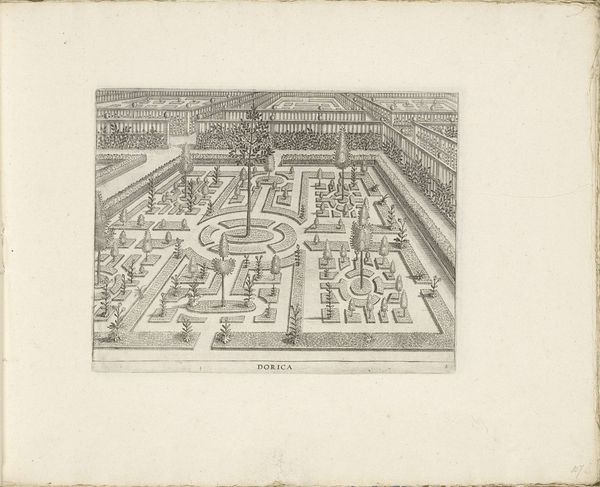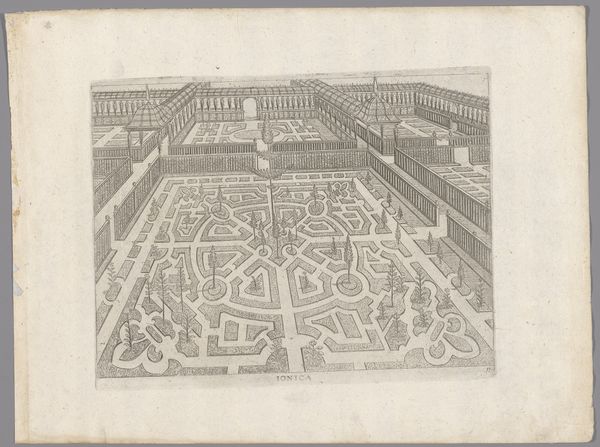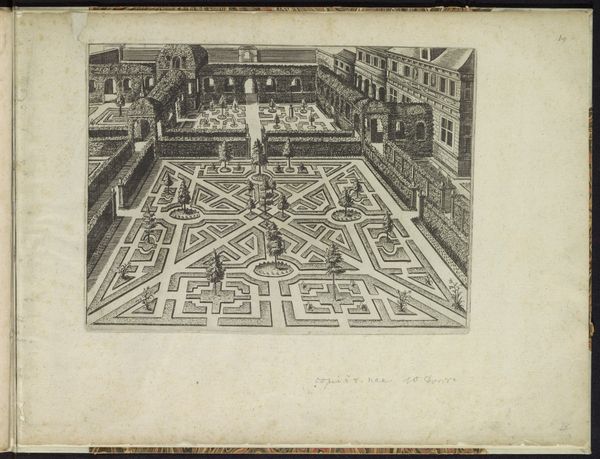
Tuin met centrale parterre omsloten door een gang van traliewerk c. 1583 - 1640
0:00
0:00
engraving
#
landscape
#
11_renaissance
#
geometric
#
italian-renaissance
#
engraving
Dimensions: height 192 mm, width 248 mm
Copyright: Rijks Museum: Open Domain
Editor: Here we have a piece called "Tuin met centrale parterre omsloten door een gang van traliewerk," created around 1583-1640 by an anonymous artist. It's an engraving showing a very geometric garden design. It seems to illustrate a meticulously constructed landscape. What strikes you most about this engraving? Curator: What immediately grabs me is the physical labor and design acumen involved in constructing such a garden. Look at the engraving itself. It's not just a representation but an artifact documenting the planned manipulation of land and material. Consider the social context—who would commission such a landscape, and what does its rigid geometry suggest about control over nature, resources and even people during that period? Editor: That's fascinating. The control aspect really comes through. Was this kind of design common at the time? Curator: Elements of geometric order were prized but this specific rendering, made available via printed engraving, becomes an act of wider cultural transmission. It democratises this controlled aesthetic, turning it into a commodity of sorts. Someone could recreate or replicate it, if they could afford the land and labour of course! So what we see here isn’t just an image of a garden; it's a snapshot of production, dissemination and perhaps aspiration within a certain class. Editor: I never considered how engravings played a part in broader material and social contexts. I now understand the art beyond just its appearance. Thank you. Curator: And I am reminded of how techniques can act as conduits that both constrain and proliferate artistic visions. A useful object lesson!
Comments
No comments
Be the first to comment and join the conversation on the ultimate creative platform.
